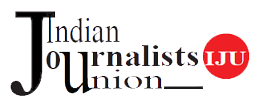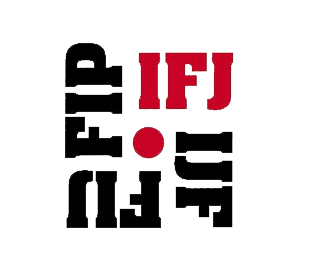~Geetartha Pathak
Prime Minister Narendra Modi has praised the role of media for making his Clean India campaign a success. He however has carefully controlled his communication strategy since coming to power, mostly choosing the Statebacked broadcaster Doordarshan and All India Radio to address India's 1.2 billion people. He has also effectively managed his social media accounts, Facebook and Twitter where he has 24 million "likes" and 7.3 million followers respectively and uses these websites as platforms to express his views and make announcements.
He and his party BJP are equally criticized in the social media platforms for their false promises, double standards and communal agendas. However the mainstream media including the invasive electronic media so far remained restive in focusing the critical issues involving the BJP government. Concentration of media and cross media ownership, enchanting major media outlets spread across the states by various means are few factors that blunted the media's sharpness in India.
In contrast, the media in US is so much aggressive against President Donald Trump and his administration that the US President called US media not only his personal enemy but also enemy of the people of the country. Trump said he always had a good relationship with the press as a businessman but that changed when he became president, and he didn't realize "how nasty, how mean, how vicious and how fake the media are." Trump's use of the term "fake news" has encouraged authoritarian leaders around the world, who now routinely dismiss criticism as "fake news".
Just days before his inauguration, Trump responded to a question from CNN's Jim Acosta about Russian interference in the American election with "Your organization is terrible.?.?.??You are fake news." Immediately, Turkey's President Recep Tayyip Erdo?an praised the President for putting the reporter "in his place."
Inspired by the anti media rhetoric of the US President the governments of Cambodia and Venezuela had threatened crackdowns on the media. They have tried to justify Trump's accusations against media. "President Donald Trump thinks that the news reported by these organizations did not reflect the truth, which is the responsibility of the professional reporters," a spokesman for Cambodia's Ministry of Information posted on Facebook that month. He further said "This means that freedom of expression must respect the law and the authority of the state." Syria's dictator Bashar alAssad dismissed reports, backed with significant evidence, that he had killed 13,000 at a military prison as fake news.
Trump has perfected the art of undermining media from his Russian friends whose propaganda techniques helped him win the 2016 elections. Vladislav Surkov, the Kremlin public relation officer who applied it in Russia to retain Vladimir Putin in power has coined the term "sovereign democracy" to give the veneer of democracy to an authoritarian government. Social media driven uprisings like the Arab Springs have changed the modern warfare forever. Wars that transform a striving state into a ground of fierce armed conflict, a web of chaos and create a humanitarian crisis are no longer declared. Nonmilitary actions would likely outnumber military actions in future wars.
Seeding news stories and social media posts that fuel partisan discord, and attempting to interfere in elections are some of the nonmilitary actions which we are experiencing in India and abroad. The aggressive, expensive and manipulative election campaign by the ruing forces in Uttar Pradesh, Gujarat, Tripura, Meghalaya and elsewhere conforms to such new design of politics.
The Indian media failed to focus the full report on Prime Minister's 2014 visit of US where he was greeted by the Indian Diaspora, who had come together under a joint banner to create a megaevent at New York's Madison Square Garden. The blitz was so high that the hundreds lining the roads around the venue, carrying placards, and seeking to focus attention on the Gujarat violence were completely ignored by the Indian media although noticed by the international press and clearly several US Congressmen as well.
The silent protests did have an impact on the worldwide coverage of the PM's grand event, where his speech received a standing ovation, and where he floored the audience with his oratory and promises.
Professional journalists from across the world who thronged the venue wrote about both the stories of the day, the big event and PM Modi's oomph factor; and the demonstrators, silent but persistent. Prime Minister Narendra Modi once narrated a story of a beggar who fished out a card swiping machine to a donor who said he had no cash to donate, to showcase the success of his Digital India campaign. It was widely published that the militant forces active in the Kashmir sector are withering away for want of money because of demonetization.
The mainstream Indian media's focus on the shifting goal of the demonetization which ranged from break up of corruption and back money, fighting terrorism, to make India a cashless economy, to bring 'idle' savings to the banking system etc was not sharp. Influencing people by floating a false idea is easier now with the new propaganda techniques to catch the attention of an increasingly fragmented audience. The news of billions of banned currencies floating on rivers, dumped in dustbins was publicized to justify the demonetization in India. Nobody questions where from those banned currencies came when 99 percent banned notes returned to the banks. And the question where the black money has gone was not widely heard.
Prasar Bharati, an autonomous Indian public broadcasting authority is now under pressure from the Information & Broadcasting Ministry to become a tool in the hands of the political parties in power. Its refusal to pay nearly Rs 3 crore as fees to a private company at the cost of national television channel Doordarshan, I&B Minister Smriti Irani has withheld funds the public broadcaster needs to pay the salaries of its employees. With corporatizations of mainstream media and major state media outlets being economically influenced, the dissenting voices have lost its loudness.
The new propaganda technique deriving out of the darkest corner of the web has changed the contours of traditional concept of democracy. Phrases like sovereign democracy have tried to give credence to a cloaked autocracy. The new narrative is a big challenge in upholding freedom of media and freedom of speech. An innovative technique has to be evolved integrating all the stakeholders of freedom of media and freedom of expression to counter the trapping of truth in the cobweb of so called alternative truth.



